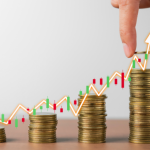As Luciano Guimaraes Tebar explains, the recent downward revisions of Brazil’s Gross Domestic Product (GDP) projections have raised concerns across different sectors of the economy. The figures indicate a slower pace of growth than expected for the coming years. In this context, forecasts point to a significant deceleration between 2025 and 2027, which reinforces the importance of closely monitoring economic indicators.
Reasons for the GDP Revision
Among the main factors influencing the revised estimates, three stand out:
Persistent inflation, which limits household consumption and affects purchasing power;
Restrictive monetary policy, as high interest rates make credit more expensive and reduce investments;
Fiscal uncertainty, related to public accounts and the need to balance government spending.
As Luciano Guimaraes Tebar suggests, when these factors are combined, they help explain why Brazil’s projected growth has been adjusted to lower levels.
Impact on Economic Sectors
According to Luciano Guimaraes Tebar, some sectors are expected to feel the effects more strongly. Industry and commerce, for example, depend on the dynamism of domestic demand and access to more affordable financing. Agribusiness, while maintaining good performance in the external market, may face additional challenges linked to climate factors and international market fluctuations. Another relevant aspect lies in investor confidence. Risk perception and uncertainty around structural reforms tend to reduce the flow of new projects, particularly in long-term areas such as infrastructure and energy.
Expectations for GDP in 2025
In the short term, projections for 2025 point to modest growth. According to Luciano Guimaraes Tebar, this outcome reflects the ongoing adjustment process, in an environment marked by still-high interest rates and the pursuit of greater fiscal discipline. For companies and investors, the coming year may require caution but also strategic planning to seize niche opportunities.

GDP Projections for 2026 and 2027
Looking at the medium-term horizon, between 2026 and 2027, expectations point to a slow recovery. As Luciano Guimaraes Tebar highlights, without consistent structural reforms—such as tax and administrative reforms—Brazil will face difficulties in sustaining stronger expansion rates. The risk is that the country may remain stuck in a cycle of limited growth, alternating between sporadic advances and periods of stagnation.
Influence of the International Scenario on Brazil’s GDP
In addition to domestic factors, the external environment also plays an important role. The global economy is going through a period of uncertainty, marked by geopolitical tensions, shifts in supply chains, and tighter monetary policies in major economies. For Brazil, this means greater volatility in foreign trade—especially in commodity exports—and more caution from foreign capital.
Why Is It Important to Monitor Economic Developments?
In summary, the reduction in Brazil’s GDP projections for 2025, 2026, and 2027 reinforces the need to monitor economic developments and adopt policies that encourage growth recovery. To avoid this scenario, as Luciano Guimaraes Tebar emphasizes, it will be essential to align fiscal stability, stimulate innovation, and introduce measures to encourage productive investment. This way, Brazil will be able to gradually regain investor confidence and consolidate sustainable growth in the medium and long term.
Author: Halabeth Gallavan







